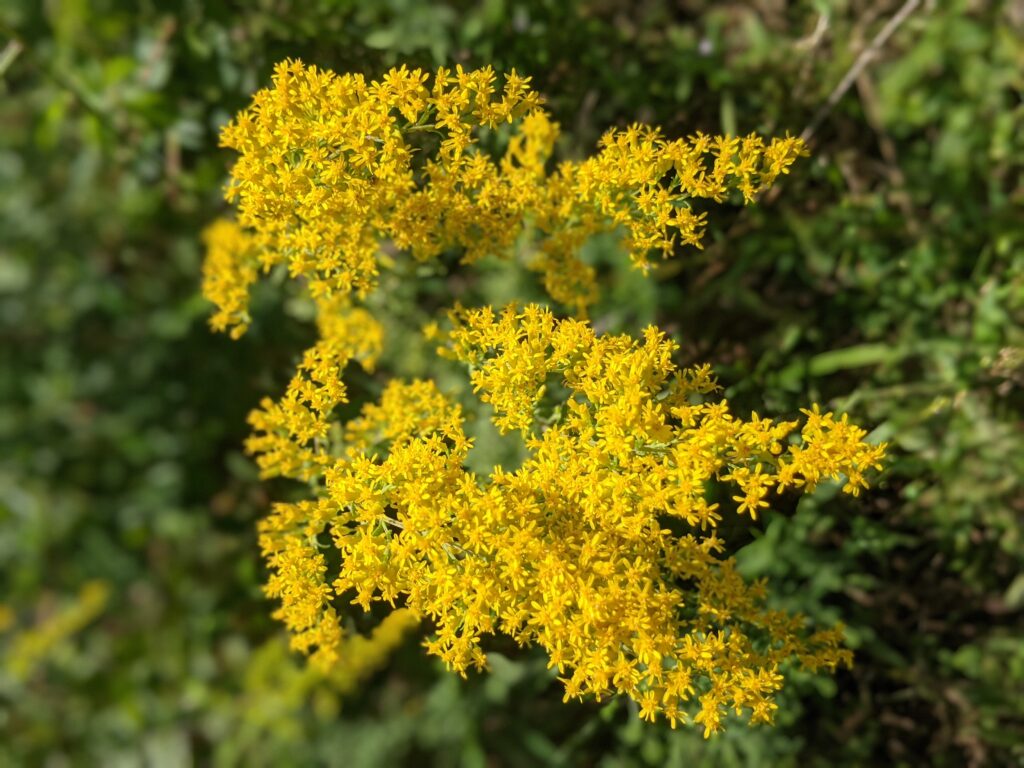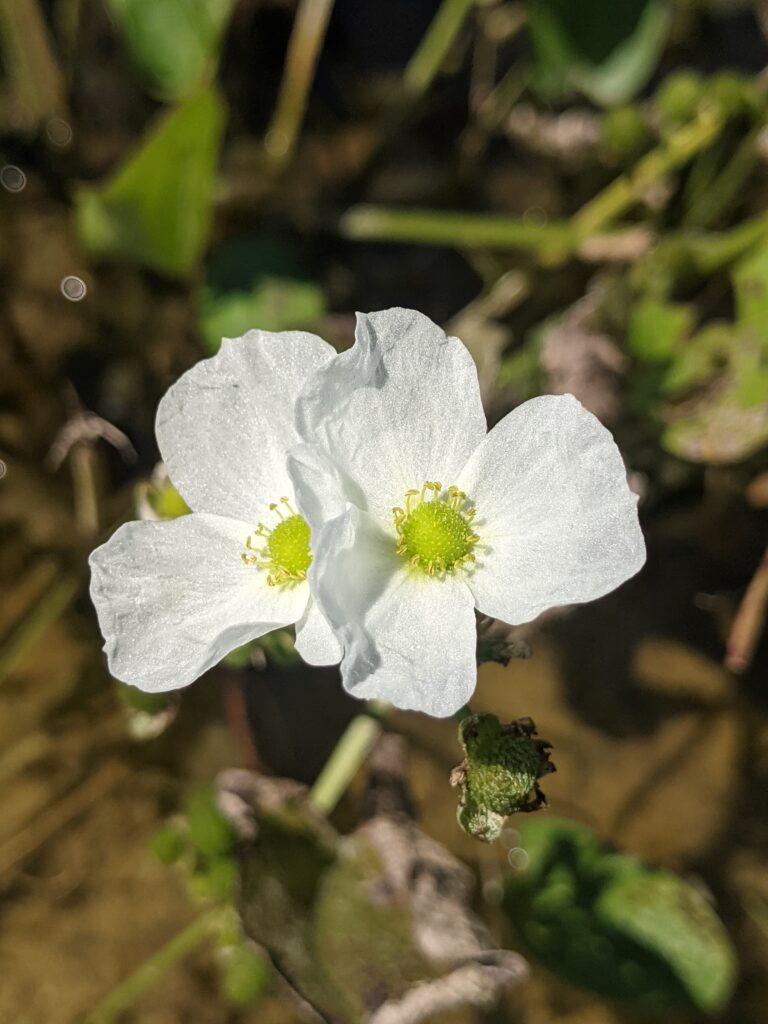Flora Fridays – September 22, 2023
go.ncsu.edu/readext?959318
en Español / em Português
El inglés es el idioma de control de esta página. En la medida en que haya algún conflicto entre la traducción al inglés y la traducción, el inglés prevalece.
Al hacer clic en el enlace de traducción se activa un servicio de traducción gratuito para convertir la página al español. Al igual que con cualquier traducción por Internet, la conversión no es sensible al contexto y puede que no traduzca el texto en su significado original. NC State Extension no garantiza la exactitud del texto traducido. Por favor, tenga en cuenta que algunas aplicaciones y/o servicios pueden no funcionar como se espera cuando se traducen.
Português
Inglês é o idioma de controle desta página. Na medida que haja algum conflito entre o texto original em Inglês e a tradução, o Inglês prevalece.
Ao clicar no link de tradução, um serviço gratuito de tradução será ativado para converter a página para o Português. Como em qualquer tradução pela internet, a conversão não é sensivel ao contexto e pode não ocorrer a tradução para o significado orginal. O serviço de Extensão da Carolina do Norte (NC State Extension) não garante a exatidão do texto traduzido. Por favor, observe que algumas funções ou serviços podem não funcionar como esperado após a tradução.
English
English is the controlling language of this page. To the extent there is any conflict between the English text and the translation, English controls.
Clicking on the translation link activates a free translation service to convert the page to Spanish. As with any Internet translation, the conversion is not context-sensitive and may not translate the text to its original meaning. NC State Extension does not guarantee the accuracy of the translated text. Please note that some applications and/or services may not function as expected when translated.
Collapse ▲Happy Flora Friday, Montgomery County! Early phenological signs of fall are among us – from the changing leaves of the Tupelo (Nyssa) to the blooming of goldenrod (Solidago). Fall is also a time of harvest for many local growers. What are you enjoying from your garden or forest this fall? Do you plan to sow greens for cool weather production? How are you enjoying the cooler weather outside?
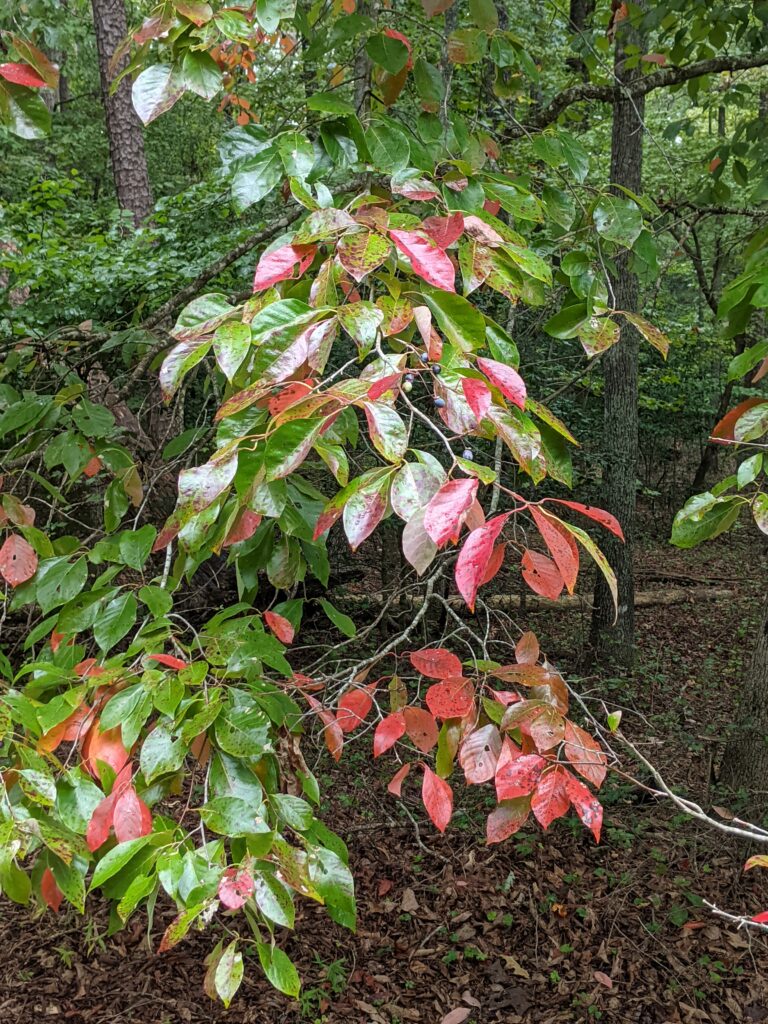
Tupelo or gum tree – Nyssa sylvatica. Fall color, pollinator benefits. One of our most fall-colorful native trees.

Yellow swallowtail butterfly enjoying a Lobelia lunch.
Fall and spring are some of my favorite times to forage forest foods. As we approach the first frost, you are likely to come across the famous muscadine in fruit. Muscadine grapes (Vitis/Muscadina rotundifolia) are native to the southeast, a unique native fruit compared to the many table and wine grape species imported from Europe. In North Carolina, harvests typically occur September through October. Resources for growing muscadines at home and commercially can be found on the NC State Viticulture Website.
Muscadines in the wild typically produce fruits that are marble-sized, dark purple or black, and have tough skins and seeds similar to grape nuts. While the skin and seeds can be and often are discarded, the entire berry is edible. Be sure to wash wild fruits before consuming. They can then be stored in the fridge for up to 4 weeks.
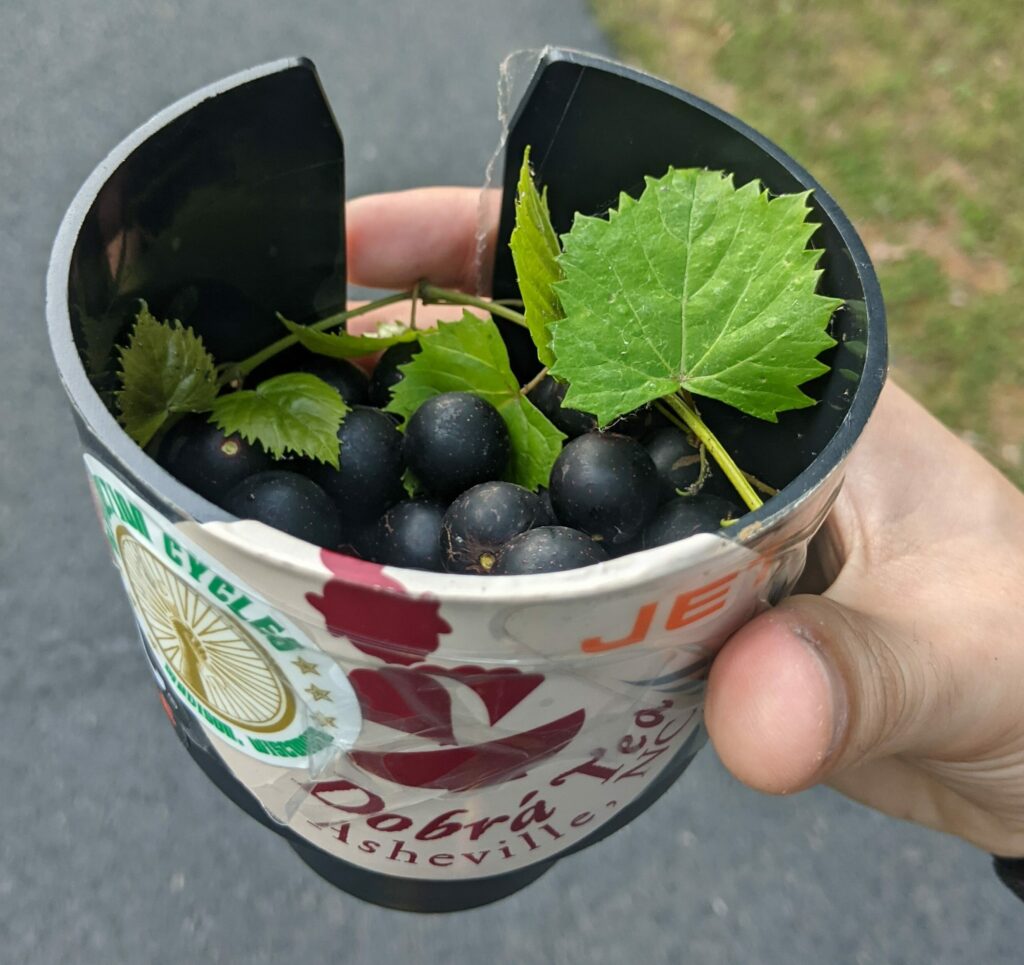
Wild muscadines – Vitis rotundifolia. Notice the round leaves with toothed margin. These berries are marble sized. Always be certain of the species you are foraging. Never consume unknown wild foods.
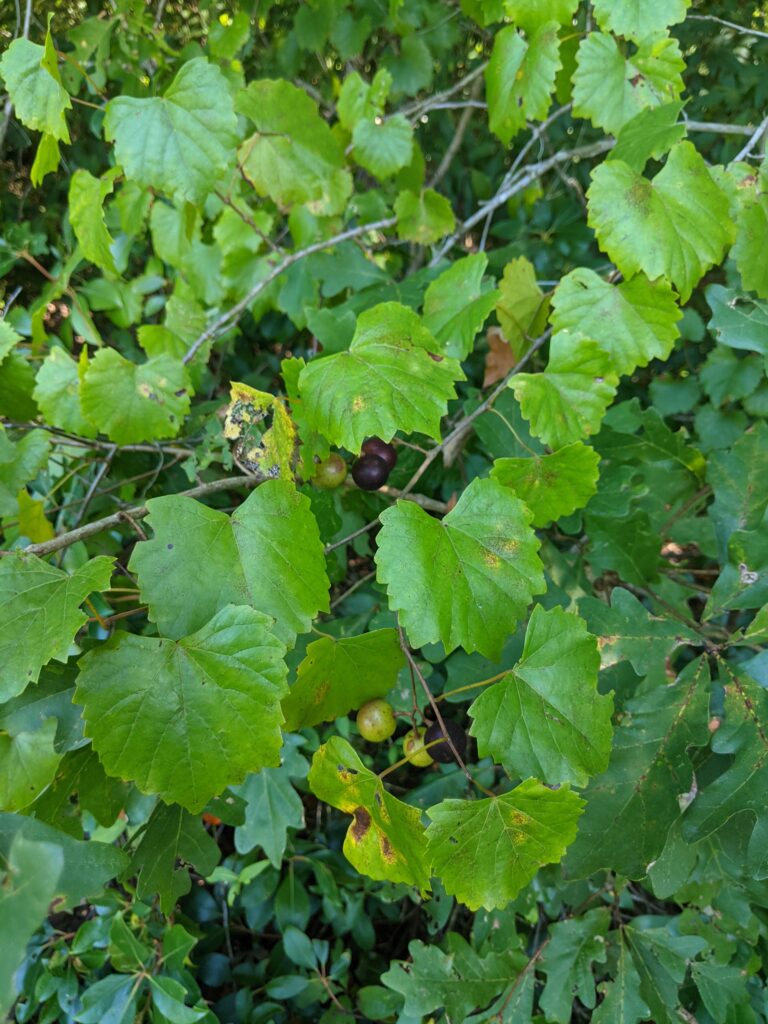
A typical wild muscadine vine. See the berries? Many hide from sight behind the leaves. These vines remain procumbent and non fruiting in the understory, but vines venturing vertically at wooded edges produce berries. Ripe, dark berries will detach from the stems with little effort – if you need to tug, it may be beneficial to let those berries be for your local wildlife or for later harvest.
Commercial muscadine varieties, often sold at markets, are prized for their large size and seedless characteristics. Many of these varieties have skins that are more palatable than the wild type. These varieties can be dark purples to black in coloration, as well as golden and bronze varieties commonly referred to as scuppernongs. Muscadines purchased can be handled and stored similarly to wild types.

Commercial muscadines are larger in size, sweeter and better yielding than wild types. Notice the size and color of these ripe berries compared to the above pictured wild type berries.
Want to get ahold of your own muscadines? In addition to market offerings, we have a few vineyards in our area with on-site u-pick and pre-pick options. Last week I had the opportunity to visit Love Joy Vineyards (Lovejoy) to harvest and sample their produce. One of the sweetest varieties owner Joe Thompson grows is a bronze variety called Frye. Other varieties grown are Summit, Tara, Carlos, Noble, Hunt, Hall, Ison, Black Beauty, and Supreme. Joe has informed me that he will be picking until first frost, or late October. For more information, you can call their info line at 919-614-6756, or visit the Love Joy Vineyard website. Happy picking! Thanks, Joe!
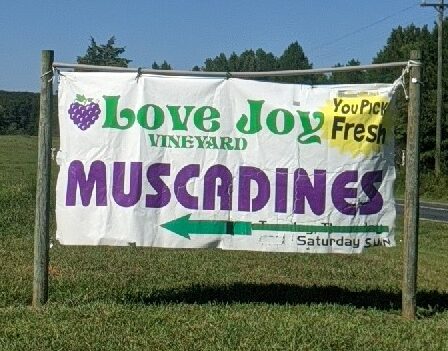
Love Joy vineyards offer U-Pick and Pre-Picked options: Friday and Saturday 9 a.m. – 5 p.m., Sunday 12 p.m. – 5 p.m. Be sure to call the info line to confirm!
As a reminder, unknown plants and mushrooms should not be picked or consumed – it’s better to snap a picture if you are not sure. If you need support identifying a specimen please email me photo(s) and or call our office at 910 576 6011, I’d be happy to assist!
– Owen Washam





